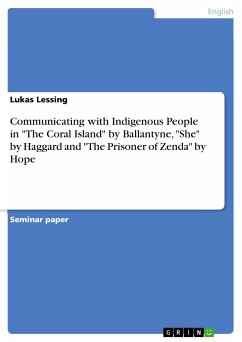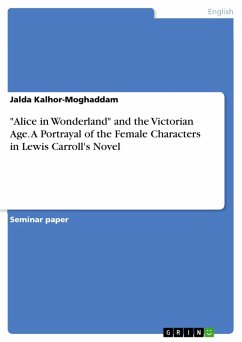Seminar paper from the year 2017 in the subject English Language and Literature Studies - Literature, grade: 1,7, University of Osnabrück, language: English, abstract: Adventurers make a lot of acquaintances. On their travels, they stand up to cannibals of the South Pacific, live together with an African tribe or even disguise themselves as monarch of a fictitious Ruritanian folk. With whomever the protagonists get in touch, they cannot get around communicating. Thus, a lot of communication processes are also displayed in the three Victorian novels The Coral Island (1858) by Robert M. Ballantyne, She (1887) by H. Rider Haggard and The Prisoner of Zenda (1894) by Anthony Hope. These communication processes, however, do not solely restrict themselves to spoken language, but also embody the mimic and gestural features of the body language. In terms of the former, it is striking that in each of the abovementioned novels, the language of the indigenous population is different to that of the adventurous main characters. Instead of their mother tongue, the adventurers are confronted with Arabic, Greek, Hebrew and Latin; with German and even with "dialects of the language peculiar to the South Sea Islanders" (Ballantyne 215). Since such a diversity of languages can also lead to communicational problems, it will be interesting to see how the characters can cope with misunderstandings or a limited vocabulary.
Dieser Download kann aus rechtlichen Gründen nur mit Rechnungsadresse in A, B, BG, CY, CZ, D, DK, EW, E, FIN, F, GR, HR, H, IRL, I, LT, L, LR, M, NL, PL, P, R, S, SLO, SK ausgeliefert werden.









